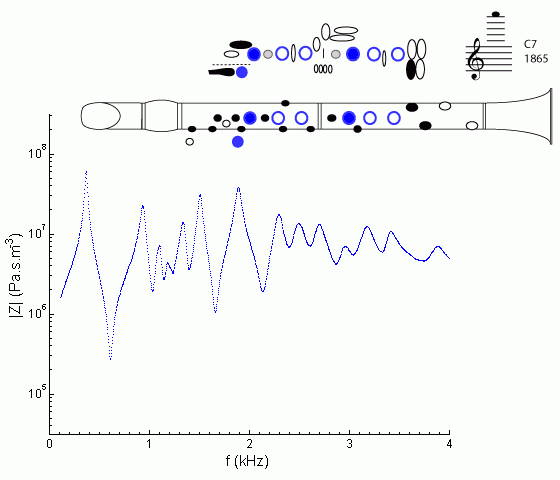| Acoustics of the clarinet |
Bb clarinet |
C7 |

|
Fingering Acoustic schematic Non-specialist introduction
to acoustic impedance Notes are the written pitch. |
Note the subtle effects of downstream tone holes at high frequencies. This fingering for C7 is much like the fingering of A#5, except that a tone hole at the end of the clarinet (G#/C# key) is opened. The two impedance curves look much the same at low frequencies, because at low frequencies the waves are well reflected near the first open tone hole. High frequency waves can travel further past open tone holes (the air in the tone hole doesn't have much time to move at high frequencies - see cut-off frequency) and so the pitch of the high frequency peaks are thus affected more than the low frequencies by the subtle effect of reflections near the open tone holes at the end of the bore. For notes so far above the cut-off frequency, the entire bore is involved and one could say that any open tone holes operate not only as register holes, but as minor adjustments to the frequency of the desired resonance.

Sound spectrum
of a Bb clarinet
played using fingering for C7.
For more explanation, see
Introduction to clarinet acoustics
|
Contact:
Joe Wolfe
/ J.Wolfe@unsw.edu.au |